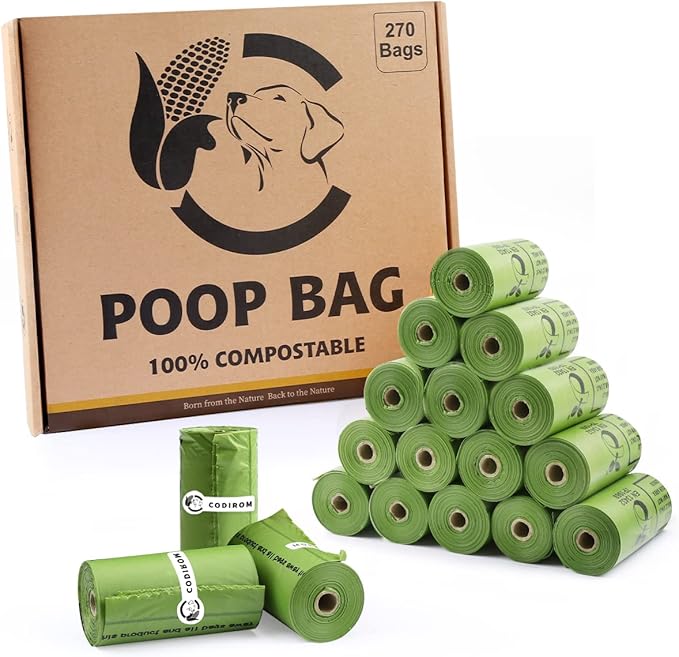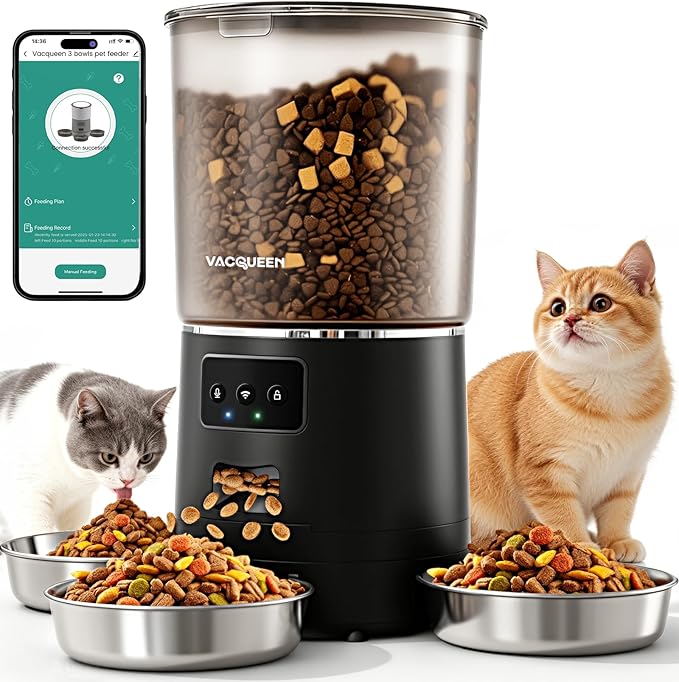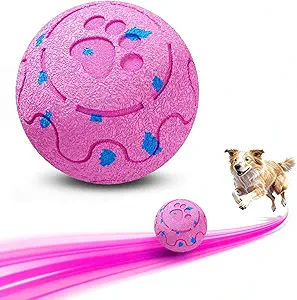How To Make Your Own Homemade Pet Shampoo Using Natural Ingredients: A Complete Guide for Pet Owners
Welcome to this comprehensive guide on creating your very own homemade pet shampoo using natural ingredients. I’m excited to share my journey toward a healthier, eco-friendly way of caring for our furry companions. In this guide, I’ll take you step-by-step through the process of making a pet shampoo that is safe, effective, and sustainable. This isn’t just about saving money—it’s about understanding exactly what touches your pet’s skin and ensuring their grooming routine supports both their well-being and our environment.
Why I Made the Switch to Natural, Homemade Pet Shampoo
It all began when I discovered the sheer number of chemicals and harsh substances in commercial pet grooming products. I faced the challenge of balancing effective cleaning with sensitivity for a pet with delicate skin. After witnessing my own dog’s discomfort and less-than-optimal response to synthetic ingredients, I decided to experiment with natural recipes. I began researching ancient and modern natural remedies and sourcing organic, biodegradable components. This journey not only transformed my pet’s grooming routine but also connected me more deeply with sustainable living practices.
My Motivation for Choosing Natural Ingredients
- Transparency: By creating shampoo myself, I know exactly what ingredients go into the formula. No sneaky chemicals, no irritants—just nature’s very best.
- Health & Safety: Natural ingredients are gentle on sensitive pet skin, reducing the risk of allergic reactions and skin irritations.
- Environmental Impact: Ingredients like castile soap and oatmeal are biodegradable and eco-friendly, leaving a lighter footprint on our environment.
- Economical: Often, the ingredients are things I already had in my kitchen cabinet. That means saving money while ensuring my pet receives only the best care.
Understanding the Benefits of Using Natural Ingredients in Pet Care
Choosing to make your own pet shampoo isn’t just an exercise in creativity—it has real, tangible benefits. Let’s break down why natural ingredients play such a vital role:
Enhanced Skin Health
- Reduced Irritation: Many pets have sensitive skin that reacts to harsh chemicals. Natural ingredients, such as oatmeal and apple cider vinegar, soothe and protect
- Balanced pH: Apple cider vinegar helps regulate skin pH, keeping the coat healthy and balanced.
- Moisture Retention: With gentle moisturizers like coconut oil, homemade pet shampoos maintain hydration without stripping essential oils.
Environmental Sustainability
- Biodegradable Ingredients: Many natural components break down without harming the environment, making them sustainable choices.
- Non-Toxic Materials: By avoiding chemicals, you minimize pollution and reduce your pet’s exposure to compounds that may accumulate in nature.
- Support for Green Practices: Embracing natural cleaning methods is part of a broader commitment to sustainability. For additional tips on eco-friendly pet practices, be sure to check out our insights on Pet Health and Environment.
Key Natural Ingredients and Their Benefits
Before diving into the recipe itself, it’s essential to understand the role each natural ingredient plays. Here’s an overview of the must-have components in my shampoo formulation:
Castile Soap
- Gentle Yet Effective: Castile soap is plant-based and cleans gently without stripping the natural oils from your pet’s coat.
- Simplicity in Formulation: It provides a bubbly base that works well with other natural components.
Oatmeal
- Soothing Properties: Finely ground oats, or colloidal oatmeal, help soothe itchy, irritated skin, creating a protective layer against allergens.
- Natural Emollient: It acts as a mild cleanser while locking in moisture.
Apple Cider Vinegar
- pH Balancing: Adjusts the pH of your pet’s skin, maintaining its natural balance.
- Anti-Bacterial and Anti-Fungal: Helps deter pests and prevent infections, while adding natural shine to the coat.
Water
- Dilution and Base: Serves as the liquid medium that brings all the other ingredients together.
Essential Oils
- Therapeutic Scent: Oils such as lavender and chamomile are known for their calming effects and delightful aroma. Always ensure that any essential oils used are pet-safe.
- Extra Benefits: Beyond fragrance, essential oils can provide additional therapeutic properties, though caution is needed with the dilution.
How To Make Your Own Homemade Pet Shampoo Using Natural Ingredients: Step-by-Step Recipe
Now that we understand the benefits and roles of each ingredient, let’s move on to the step-by-step process of creating a batch of homemade pet shampoo. I’ve tested this recipe extensively at home with excellent results.
Ingredients List
- 1 cup of Castile soap
- 1 cup of water
- 1/2 cup of colloidal oatmeal (finely ground oats)
- 1 tablespoon of apple cider vinegar
- 3-5 drops of pet-safe essential oil (optional – for aroma and therapeutic benefits)
Step-by-Step Instructions
- Combine the Liquid Base: In a clean mixing bowl, gently mix the Castile soap with water. Stir slowly to avoid creating excessive bubbles—this blend serves as the perfect base.
- Add Oatmeal Gradually: Sprinkle in the finely ground oatmeal while stirring continuously. The oatmeal will blend into the mixture, creating a soothing consistency that protects the skin.
- Mix in Apple Cider Vinegar: Pour in the apple cider vinegar and stir until fully incorporated. Its natural preservative qualities and pH balancing effects will shine through.
- Add Essential Oils: If using essential oils, add 3-5 drops now. Keep in mind the importance of proper dilution. Mix thoroughly to ensure even distribution.
- Transfer to a Storage Bottle: Carefully pour the finished mixture into a clean, empty bottle or jar. A pump bottle works best during busy bath time sessions.
How To Use Your Homemade Pet Shampoo: A Practical Guide for a Stress-Free Bath Time
Now that you have your shampoo ready, let’s talk about how to use it correctly. Bath time is an excellent opportunity not only for cleanliness but also for bonding with your pet. My process is designed to ensure comfort, safety, and maximum effectiveness.
Preparing the Bathing Environment
- Non-Slip Surface: Whether you’re using a bathtub, sink, or an outdoor area, make sure the surface is non-slip to avoid accidents.
- Gather All Supplies: Before starting, assemble all necessary supplies—shampoo, a good brush, towels, and a few treats to reward your pet. Keeping everything organized minimizes stress during the bath.
- Optimal Water Temperature: Use lukewarm water to ensure your pet is comfortable. Extreme temperatures can be uncomfortable and even dangerous for animals.
Step-by-Step Bathing Procedure
- Groom Before Bath: Brush your pet thoroughly to remove loose hair and detangle any mats. This step not only makes washing easier but also excludes fur from clogging the drain.
- Moisten Carefully: Begin by gently wetting your pet’s coat with lukewarm water, starting at the paws and slowly progressing to the rest of the body. Avoid the face, eyes, and ears.
- Apply the Shampoo: Take a small amount of your homemade shampoo and lather it lightly over your pet’s fur. Massage the mixture in to create a soothing effect that also improves circulation.
- Let the Mixture Sit: Allow the shampoo to sit for a few minutes, letting the natural ingredients work their magic on any buildup of dirt or oil. You can use this time to offer your pet gentle massage and comforting words.
- Rinse Thoroughly: Rinse your pet’s coat completely with lukewarm water, ensuring that no shampoo residue remains to cause irritation. Continue rinsing until all bubbles have disappeared.
- Dry with Care: Finally, use soft towels to pat your pet dry. If your pet is comfortable and the weather allows, air-drying is an excellent option. Alternatively, a pet-safe blow dryer on a low setting can be used cautiously.
Real-World Testing: A Success Story with a Golden Retriever
Allow me to share an experience that solidified my belief in this natural shampoo method. I have a 5-year-old Golden Retriever who had a history of mild skin irritations and frequent itching. After a few trials with commercial products that promised relief yet seemed to fall short, I decided to switch to this homemade recipe.
The process was simple enough to integrate into our weekly routine. The first bath using the natural shampoo was a breakthrough. My Golden Retriever, previously uncomfortable during grooming sessions, relaxed during the treatment, and I observed a noticeable improvement in the sheen and softness of his coat. His skin, which used to show signs of irritation, now appeared calmer and more balanced after just a few washes.
This real-world test confirmed that the combination of gentle natural ingredients creates a powerful product that not only cleans effectively but also nurtures the skin. The reaction was overwhelmingly positive—he seemed to enjoy the gentle massage and the soothing properties of the oatmeal, and the calming scent of the diluted essential oils didn’t overwhelm his sensitive nose.
Tailoring the Shampoo for Specific Skin Concerns
Every pet’s skin is unique. Some may experience allergies, dryness, or even infestations, while others thrive with minimal care. The beauty of a homemade shampoo is the flexibility to adapt the recipe to specific needs. Here are a few custom recipes that address common issues:
Gentle Oatmeal Shampoo for Allergies and Dry Skin
- Ingredients:
- 1 cup of finely ground oatmeal
- 1 cup of baking soda
- 1 quart of water
- Instructions:
- Mix the oatmeal and baking soda in a bowl.
- Slowly add water while stirring continuously to form a smooth mixture.
- Gently apply the blend on your pet’s wet coat, avoiding sensitive areas like the eyes.
- Let the mixture sit for 10–15 minutes before rinsing thoroughly with lukewarm water.
Anti-Flea Shampoo to Repel Unwanted Pests
- Ingredients:
- 1 cup of liquid Castile soap
- 1 cup of apple cider vinegar
- 2 cups of water
- Instructions:
- Combine all ingredients in a bowl.
- Wet your pet’s fur evenly with the mixture.
- Massage the shampoo into the coat, paying extra attention to areas where fleas are common, such as the neck and tail base.
- Rinse completely with lukewarm water to remove any residual scent that may attract pests later.
Moisturizing Coconut Oil Shampoo for Extra Hydration
- Ingredients:
- 1 cup of unscented liquid Castile soap
- 1/2 cup of coconut oil
- 1/4 cup of water
- Instructions:
- Mix the Castile soap, coconut oil, and water thoroughly until the ingredients are well combined.
- Wet your pet’s coat and apply the mixture, massaging gently for even distribution.
- Allow the shampoo to sit for a few minutes, letting the coconut oil deeply moisturize the skin, then rinse fully with lukewarm water.
Step-by-Step Instructions to Craft Your Perfect Pet Shampoo
Creating the perfect pet shampoo is a process of experimentation and adaptation. Follow these simple steps to adjust the recipe to your pet’s unique needs:
Step-by-Step Instructions
- Measure and Mix: Start by measuring the appropriate amounts of Castile soap, water, and colloidal oatmeal. Mix these ingredients slowly to avoid bubbles.
- Incorporate Specialty Ingredients: Depending on your pet’s skin type, add ingredients such as apple cider vinegar for pH balance or coconut oil for nourishment. Use essential oils sparingly and only if they’re confirmed to be safe.
- Blend Evenly: Ensure all ingredients are thoroughly combined. The consistency of your shampoo should be smooth and uniform, without clumping of any solids.
- Storage: Pour the mixture into a clean pump bottle or jar. Label it with the date and ingredients to keep track of freshness, as natural separation can occur over time.
- Perform a Test: Always perform a patch test by applying a small amount on your pet’s skin. Wait 24 hours to confirm that there are no adverse reactions before full usage.
Pros & Cons of Using Homemade Natural Pet Shampoo
It’s important to weigh the benefits and potential drawbacks of any health or grooming regimen. Here are some clear pros and cons based on my experience:
- Pros:
- Complete transparency of ingredients.
- Customization for specific skin issues.
- Environmentally friendly and biodegradable.
- Cost-effective and easily accessible ingredients.
- Enhanced bonding during a calm bath time routine.
- Cons:
- Requires additional time and effort to prepare.
- Homemade products lack preservatives, resulting in a limited shelf-life.
- Not every formula will work for every pet; some trial and error is necessary.
Integrating Sustainable Practices in Pet Care
Implementing sustainable practices is about more than just washing your pet—it’s a holistic approach to caring for the environment and reducing waste. The natural ingredients we use in these shampoos not only are non-toxic for your pet but also break down easily without harming our ecosystem.
Environmental and Health Benefits
- Biodegradability: Most of the natural ingredients found in the recipe are biodegradable. This means they decompose naturally, reducing the likelihood of environmental pollution.
- Non-Toxicity: Using organic and plant-based components limits exposure to toxic substances both for your pet and for wildlife. This approach is essential in today’s world where chemical contamination is a growing concern.
- Supporting a Cleaner Future: Every time you choose natural ingredients over synthetic chemicals, you contribute to a healthier planet. This choice aligns with broader sustainable practices that focus on reducing the overall chemical footprint.
Expert Insights on the Natural Shampoo Process
In my practice as a holistic veterinarian and sustainable pet lifestyle consultant, I’ve seen firsthand how natural ingredients can improve animal health. The benefits of natural shampoos extend beyond clean coats—they support skin health, boost immune systems by reducing exposure to irritants, and even improve behavior during grooming sessions by reducing stress.
Scientific Considerations and Material Benefits
- Skin Biology: An animal’s skin is more sensitive than human skin. It lacks the protective layer that human skin has, so natural, gentle ingredients are crucial for maintaining balance.
- Material Science: Plant-based ingredients like Castile soap utilize saponins to clean without stripping natural oils. Oatmeal contains beta-glucans that serve as anti-inflammatory agents, making it an excellent addition for soothing irritated skin.
- Non-Allergenic: By avoiding synthetic additives and preservatives, homemade formulas reduce the risk of allergic responses in pets, leading to healthier, more resilient skin over time.
Real-World Testing: More Than Just a Recipe
Let me tell you more about the transformative effects this homemade natural shampoo had on one of my favorite patients—a delightful 5-year-old Golden Retriever. Before transitioning to the natural formula, he suffered from seasonal allergies that resulted in itchy, inflamed patches along his back and legs. During one of our grooming sessions, after using the homemade shampoo, I noticed an immediate difference:
- Improved Coat Luster: His coat began to shine and looked visibly healthier.
- Reduced Itching: The oatmeal provided much-needed relief from itching, and he was more relaxed during and after the bath.






